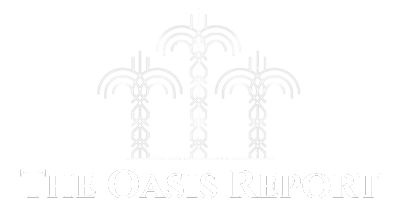More economic data on the GCC states
For other countries in the region, go to our Mena economic data page
UAE economic indicators at a glance
Financial services, tourism, trade and real estate are among the most important industries in the UAE’s non-oil economy, which is growing much faster than its hydrocarbon sector. This outperformance is helping further diversify the economy and reduce the country’s reliance on hydrocarbon revenues.
The UAE’s rising population – especially when it comes to expats – underpins the country’s upbeat macroeconomic outlook, with annual GDP growth the highest in the Middle East last year according to S&P Global data.
UAE GDP
The below provides an overview of the UAE economy, including key indicators such as nominal GDP, GDP per capita and annual GDP growth. These show the size of the UAE’s economy, income distribution among its population and the pace of economic expansion.
UAE nominal GDP
UAE GDP per capita
After plateauing from 2018 to 2023, including a decline in Covid-affected 2020, the UAE’s GDP per capita will expand at a compound annual growth rate of 4.1 percent from 2023 to 2027, according to IMF forecasts.
UAE GDP growth
The UAE’s economy has rebounded since the Covid 19 pandemic caused a global recession, with nominal GDP in 2025 forecast to be 37 percent bigger than in 2021.
UAE oil breakeven prices
The breakeven oil price is the per-barrel price of crude at which oil the country’s oil revenue will be sufficient to pay for government spending that year. The lower the figure the better from the country’s perspective.
The UAE’s breakeven price has fluctuated this decade, with a notable dip in 2022. It is projected to fall again in 2025 to below $50.
UAE inflation
UAE inflation, measured via the consumer price index, has been steady since economic activity normalised in 2023 following the disruption of the Covid 19 pandemic.
UAE lending, debt & account balance
UAE government debt as a percentage of GDP peaked in 2020 at 41.3 percent as the state spent heavily to support citizens and the wider economy during the height of the Covid 19 pandemic.
Oil prices hit a 14-year high in mid-2022, swelling the UAE’s hydrocarbon revenue and enabling the country to run a sizeable current account surplus. Renewed oil price weakness is lowering the current account balance – both in absolute terms and as a percentage of GDP.
UAE trade
UAE import and export volumes will expand 3.7 to 4.8 percent annually from 2024 to 2027 as the economy normalises following the Covid 19 pandemic.
The growth of both imports and exports reflects the UAE’s rising population and buoyant economy. Much of the country’s goods exports are re-exports.
The UAE’s top 10 trade partners
The UAE’s top exports include oil and mineral fuels, plus re-exported goods such as precious stones, metals and electronic equipment.
This is reflected in its top imports featuring much of the same good categories such as precious stones, metals and electronic equipment, plus machinery.
UAE foreign direct investment
Foreign direct investment (FDI) into the investor-friendly UAE has soared since 2018. Annual outward investment is more varied.
UAE sovereign ratings
The three major ratings agencies – Fitch, Moody’s and S&P Global – all give Abu Dhabi high investment-grade ratings.
Moody’s and Fitch also assign separate sovereign ratings for the UAE overall. These high ratings reflect the country’s creditworthiness and economic stability.
UAE governance
Within the GCC, the UAE has the highest ranking on the Corruption Perceptions Index and currently is also above the US. The higher the score, the lower the corruption in a country.
UAE population
The UAE’s population increased by nearly 700,000 from 2014 to 2023, reflecting a steady influx of additional foreign workers to the country.
UAE life expectancy
UAE life expectancy has remained little changed over the past decade or so, albeit with a temporary decline in 2020 and 2021 due to the Covid 19 pandemic.
Expats in the UAE
UAE expats’ country of origin
Expats constitute about three-quarters of the UAE’s population, reflecting the private sector’s reliance on foreign workers, particularly in industries such as construction, healthcare and services.
About three quarters of the UAE’s residents come from abroad and a third of these are from India. The large majority of UAE expats live in Dubai and Abu Dhabi.
UAE unemployment rate
The UAE’s unemployment rates have been volatile, peaking in 2020 before declining to below 3 percent in 2023.
Education in the UAE
The UAE’s Pisa scores are significantly below the OECD averages across all three subjects, highlighting the need for additional investment in education and further improvements in teaching methods to raise student performance.
The 2022 results for the UAE and the 80 other countries that take part in the tests show the impact of Covid lockdowns on students.
The charts and tables on this page are for general information purposes only. AGBI aims to keep the information up-to-date and correct, but makes no representations or warranties of any kind, express or implied, about the completeness, accuracy, reliability, suitability or availability of the information. Any reliance you place on such information is therefore strictly at your own risk. All IMF, World Bank and United Nations data on this page is publicly available. The latest IMF World Economic Outlook was published in April 2025



